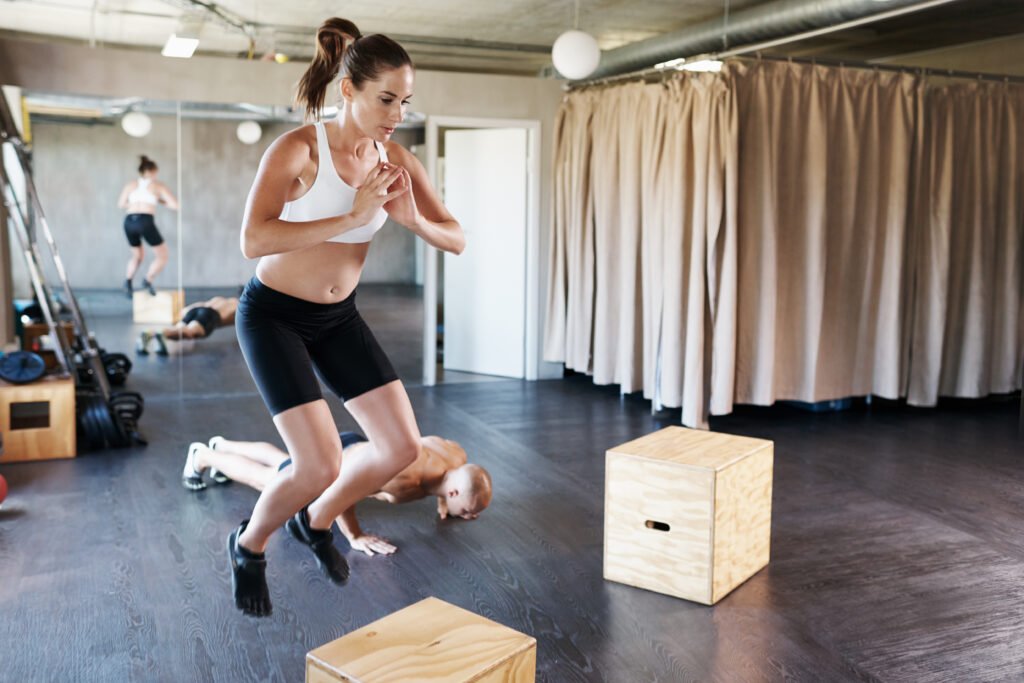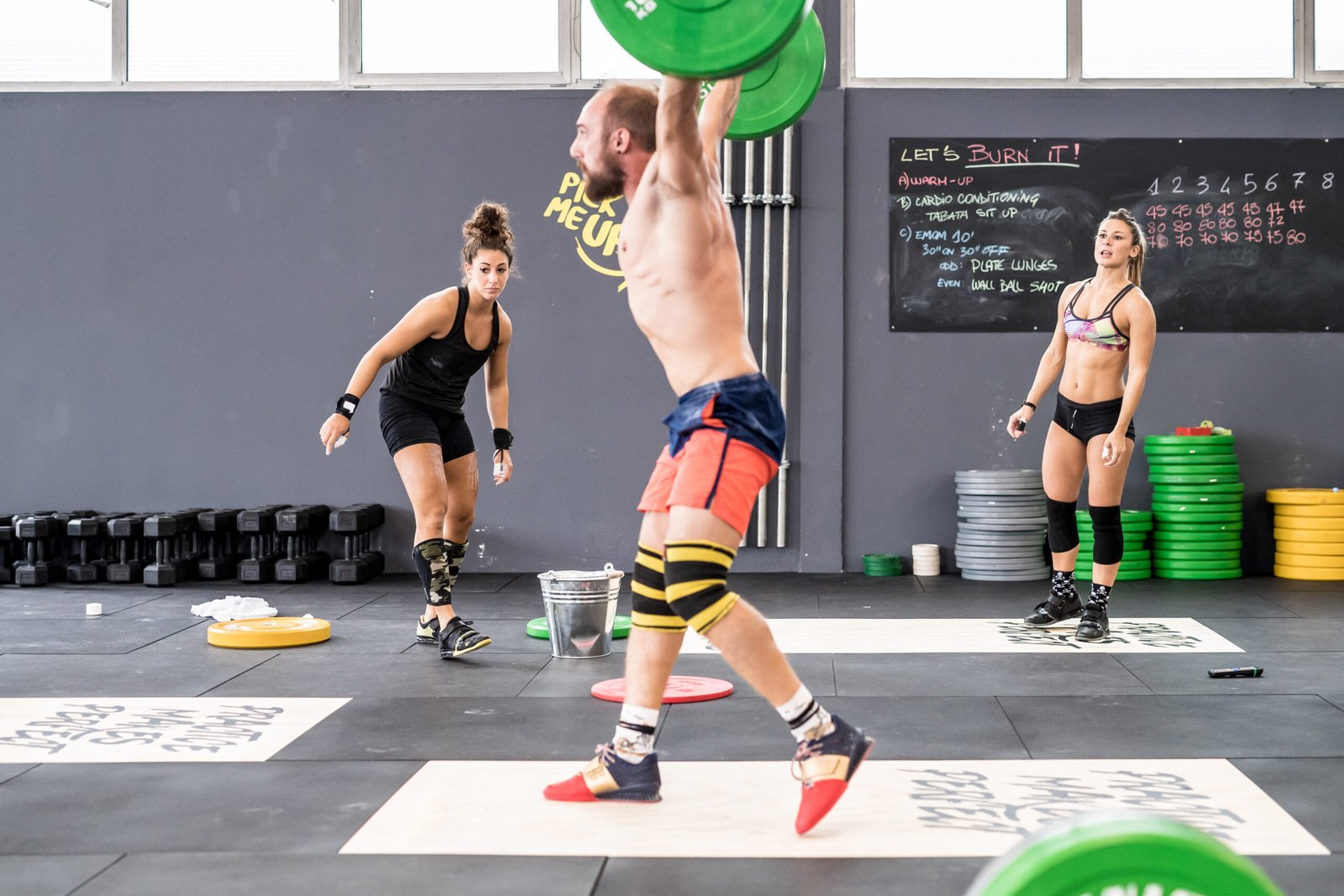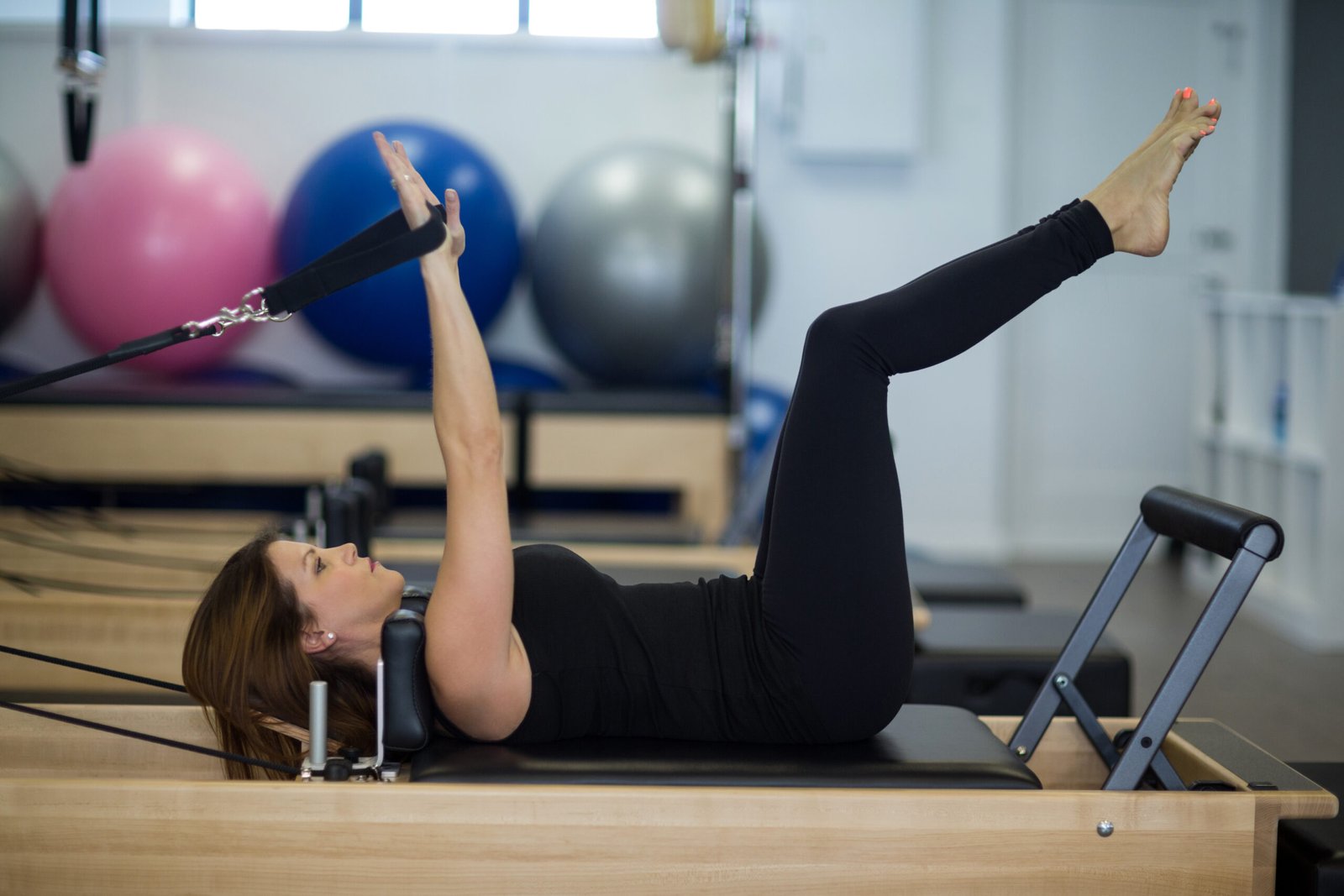Plyometrics and injury prevention—striking a balance between explosive power and safety—is a crucial consideration for anyone engaging in high-intensity exercise routines. This dynamic training method is renowned for improving athletic performance, offering a pathway to achieve remarkable feats of strength and agility. From elite athletes to fitness enthusiasts, incorporating plyometrics effectively can lead to significant advancements in speed, power, and overall athleticism. However, ensuring safety while pursuing these gains is essential, as improper execution may result in setbacks. This blog provides a comprehensive guide on mastering plyometrics while minimizing injury risks, ensuring both explosive performance and lasting health benefits.
Plyometric Exercises for Power
Plyometric exercises are a key component for enhancing explosive power, characterized by short bursts of high-intensity actions. These exercises focus on improving the efficiency of fast-twitch muscle fibers through rapid, forceful movements. Typical plyometric activities, such as jumping, bounding, or hopping, work to increase not only muscle strength but also performance in various athletic disciplines. Adequate technique and progression in exercises are crucial in mitigating injury risks while maximizing the gains achieved through this powerful training method.
While the potential benefits of plyometrics are vast, achieving them requires a strategic approach. Beginning with foundational exercises that involve lower intensity movements can pave the way for progression, ensuring that the body’s muscular and nervous systems adapt safely before advancing to more complex routines. Some examples include:
| Exercise | Target Area | Benefits | Difficulty Level | Notes for Progression |
|---|---|---|---|---|
| Jump Squats | Quads, Hamstrings, Glutes | Builds leg strength and coordination | Beginner | Start with lower reps and focus on form. |
| Box Jumps | Quads, Glutes, Calves | Improves explosive leg power | Intermediate | Adjust box height for progression. |
| Lateral Bounds | Hip Flexors, Quads, Calves | Enhances lateral quickness and agility | Intermediate | Focus on smooth landings to minimize injury risk. |
| Depth Jumps | Quads, Hamstrings, Glutes | Improves reactive strength and power | Advanced | Begin with lower box height and increase gradually. |
– Jump squats: A beginner-friendly exercise that focuses on leg strength and coordination.
– Box jumps: These build explosive power and can be adjusted for height and difficulty.
– Lateral bounds: Essential for enhancing lateral quickness and agility in sports.
– Depth jumps: Used to transition from moderate to advanced plyometric training, focusing on reactive strength.
By adhering to proper form and gradually increasing the intensity of exercises, athletes can effectively tap into their explosive potential while reinforcing injury prevention.
Plyometrics for Injury Prevention
| Component | Description | Benefits | Safety Tips |
|---|---|---|---|
| Foundational Exercises | Start with low-impact exercises like jumping jacks or low-box drills. | Build basic strength and coordination | Gradually increase intensity based on form and technique. |
| Progressive Intensity | Increase exercise difficulty as strength and coordination improve. | Enhances muscle adaptation and injury prevention | Avoid jumping to advanced exercises too soon. |
| Controlled Technique | Emphasize proper landing mechanics and core stability. | Reduces impact stress on joints and muscles | Focus on soft, controlled landings to minimize risk. |
| Rest and Recovery | Ensure adequate recovery time between plyometric workouts. | Prevents overuse injuries and promotes muscle recovery | Prioritize sleep and active recovery sessions. |
Plyometrics, when carefully integrated into a workout routine, offers an effective method for injury prevention. This training technique not only builds power but also enhances coordination and muscle strength, critical components in reducing the risk of injuries. The key to safe plyometrics lies in starting with foundational exercises and progressively advancing in intensity and complexity, thereby ensuring the body’s readiness for the demands of explosive movements.
Incorporating foundational exercises allows beginners to establish a solid base, progressively enhancing their physical capabilities. It’s essential to pair plyometric training with adequate rest and proper technique to avoid overuse injuries and ensure consistent progression. Key components of a safe plyometric program include:
– Foundational exercises: Starting with exercises like jumping jacks or low-box drills to build basic strength.
– Progressive intensity: Increasing the difficulty of exercises as one gains more strength and coordination.
– Controlled technique: Emphasizing proper landing techniques and core stability throughout movements.
– Rest and recovery: Allocating sufficient time for muscle recovery to prevent fatigue-related injuries.
The balance of power and safety in plyometrics is best achieved with expert guidance, ensuring that exercises align with individual fitness levels and goals while reducing the risk of injury.
Plyometrics: Balancing Power with Safety

Unleashing explosive power safely involves a careful balance between the intensity of plyometrics and appropriate safety measures. These exercises are renowned for engaging fast-twitch muscle fibers, yielding remarkable gains in power. However, proper technique and smart progression are integral to harnessing the benefits without falling prey to common injuries associated with plyometrics.
Incorporating complementary strength and flexibility exercises enhances control during plyometric workouts, further safeguarding against injury. The benefits of expert guidance and individualized programming cannot be overstated, as they ensure that plyometric exercises meet your fitness level and objectives. Here are some strategies to achieve this balance:
– Strength training: Pairing plyometrics with exercises like squats and lunges to build foundational strength.
– Flexibility training: Incorporating stretching routines to enhance range of motion and muscle elasticity.
– Personalized programming: Tailoring plyometric routines to match individual capacities and goals.
– Recovery emphasis: Ensuring adequate recovery time to minimize overuse injuries and promote optimal results.
By giving equal attention to both explosive power and safety, individuals can enjoy sustained progress in their athletic pursuits while minimizing the risk of injury.
What Are Plyometrics, and How Do They Benefit Athletic Performance?
Plyometrics are high-intensity movements designed to increase muscle power through quick, explosive actions such as jumping and bounding. These exercises are instrumental in boosting athletic performance by improving key areas like speed, strength, and agility—elements crucial for excellence in numerous sports domains. By training the muscles to exert maximum force in short bursts, plyometrics enhance overall neuromuscular efficiency, enabling athletes to perform optimally.
Integrating plyometrics into training regimens offers an exceptional opportunity to develop explosive power. Techniques such as progressive loading are essential for maximizing benefits while minimizing injury risks. Plyometrics contribute to better performance in competitive events by harnessing the following:
– Increased speed: Exercises like sprints enhance acceleration abilities vital for various sports.
– Improved strength: Jump training builds lower body strength essential for sports like basketball and volleyball.
– Enhanced agility: Drills such as cone drills improve ability to change direction efficiently.
By investing in proper technique and structured progression, athletes can effectively leverage plyometrics to boost their performance on the field.
How Can Plyometric Exercises Be Safely Incorporated into a Workout Routine?
Incorporating plyometric exercises safely into a workout routine begins with an appropriate warm-up to prepare muscles and joints, which reduces injury risk during training. Starting with low-intensity movements and steadily advancing to more challenging ones is crucial as technique and strength improve. Proper form is paramount throughout these exercises, with an emphasis on controlled landings and stable core engagement to maximize efficiency and minimize injury risks.
The importance of integrating rest and active recovery within a workout can’t be overstated. To ensure safe and effective inclusion of plyometrics in routines, individuals should:
– Begin with warm-ups: Dynamic stretches or low-impact exercises to prepare the body for intense activity.
– Start with basic exercises: Initial movements like squat jumps to build foundational skills.
– Ensure controlled form: Attention to proper landing mechanics and posture to prevent faulty movements.
– Integrate rest periods: Regular breaks within workouts to avoid overuse and fatigue injuries.
– Seek expert guidance: Consulting with a fitness professional to tailor exercises to individual capabilities and goals.
Adhering to these guidelines makes it possible to enjoy the benefits of plyometric exercises while safeguarding physical well-being.
What Are the Most Common Injuries Associated with Plyometric Training, and How Can They Be Prevented?
Plyometric training, while effective, can lead to common injuries such as joint sprains, muscle strains, and tendinitis due to its high-impact nature. These risks are often exacerbated by poor technique, inadequate warm-up, and excessive training volume or intensity. Ensuring proper form along with a comprehensive warm-up can significantly reduce these injury risks.
To further prevent injuries, athletes should consider:
| Injury Type | Cause | Prevention Strategy | Best Practices |
|---|---|---|---|
| Joint Sprains | Poor landing mechanics or inadequate warm-up | Focus on proper form, controlled landings, and warm-up exercises | Warm-up with dynamic stretches and focus on joint mobility. |
| Muscle Strains | Overuse or insufficient strength | Gradually increase intensity, pair with strength training | Ensure proper recovery and avoid overtraining. |
| Tendinitis | Repetitive stress on tendons | Strength and flexibility training, rest periods | Integrate strength exercises and alternate activity days. |
| Impact Stress Injuries | Hard training surfaces or improper footwear | Use suitable shoes and proper surfaces for training | Avoid hard concrete and use gym mats or grass for exercises. |
– Form check: Emphasizing correct posture and techniques during exercises.
– Gradual intensity increase: Allowing the body to adapt safely to higher training demands.
– Strength and flexibility integration: Combining strength and flexibility exercises to enhance joint and muscle support.
– Supportive footwear: Wearing suitable shoes to provide cushioning and reduce impact stress.
– Appropriate training surfaces: Using surfaces such as gyms or grass to absorb impact, reducing stress on joints.
By following these preventive measures, individuals engaging in plyometric training can maintain a healthy and effective fitness regimen.
How Does a Proper Warm-Up Contribute to Injury Prevention in Plyometric Exercises?
A well-planned warm-up is crucial in preparing the body for the demands of plyometric exercises. By increasing blood flow and flexibility, it reduces the risk of strains and sprains, setting a solid foundation for high-impact activity. Warm-up routines enhance flexibility and range of motion, allowing athletes to perform dynamic movements safely.
Moreover, activating the nervous system through warm-up drills improves coordination and muscle response, readying the body for sudden, forceful movements. Considerations for a beneficial warm-up routine include:
| Warm-Up Component | Purpose | Examples | Duration |
|---|---|---|---|
| Dynamic Stretches | Activate muscles and improve flexibility | Leg swings, arm circles, high knees, butt kicks | 5-10 minutes |
| Progressive Intensity | Gradually increase heart rate and body temperature | Light jogging, jump rope, or small sprints | 5-10 minutes |
| Muscle Focus | Prepare muscles used in plyometrics | Focus on quads, calves, hamstrings, and hip flexors | 5 minutes per muscle group |
– Dynamic stretches: Movements like leg swings or arm circles to engage the muscles.
– Progressive intensity: Gradually increasing heart rate and body temperature with light jogging or jump rope.
– Specific muscle focus: Targeting particular muscles used in plyometrics for a focused warm-up.
Integrating these components ensures that the body is thoroughly prepared, reducing injury risk and enhancing performance during plyometric exercises.
Are There Specific Modifications or Alternative Exercises for Beginners Looking to Start Plyometric Training Safely?

For beginners, starting plyometric training can be intimidating. However, by opting for specific modifications or alternative exercises, they can safely engage in this powerful training method. Beginning with low-impact exercises, such as squat jumps or low box steps, assists in reducing injury risk while laying the groundwork for improved strength and coordination.
Gradually increasing intensity and complexity as coordination improves is key. Beginners should prioritize proper form to ensure safe movement patterns. A balanced approach might include:
– Low-impact plyometrics: Exercises such as squat pulses or horizontal bounds to begin with minimal stress.
– Technique emphasis: Focusing on controlled landings and balanced movements.
– Cross-training inclusion: Adding different activities like swimming or cycling for comprehensive fitness.
– Rest days allocation: Designating rest periods to allow for recovery and muscle adaptation.
– Professional guidance: Working with a coach for personalized tips and progression monitoring.
By following these beginner-friendly strategies, newcomers can enjoy the benefits of plyometrics while minimizing the risk of injury.
Expanding Horizons: Safely Achieving Explosive Power
As we have explored, plyometrics and injury prevention are not mutually exclusive goals but complementary elements of a successful fitness journey. Striking the right balance between intensity and safety allows athletes to unlock their explosive potential while safeguarding their well-being. Whether you are an athlete seeking competitive edge or a fitness enthusiast eager to explore new heights, incorporating these insightful tips into your training routine ensures sustained progress. Remember, consulting with an expert can offer tailored advice, enabling you to master plyometrics with confidence while minimizing risks. Through smart training and careful progression, anyone can harness the remarkable power of plyometrics, embarking on a path to superior performance and comprehensive health.













